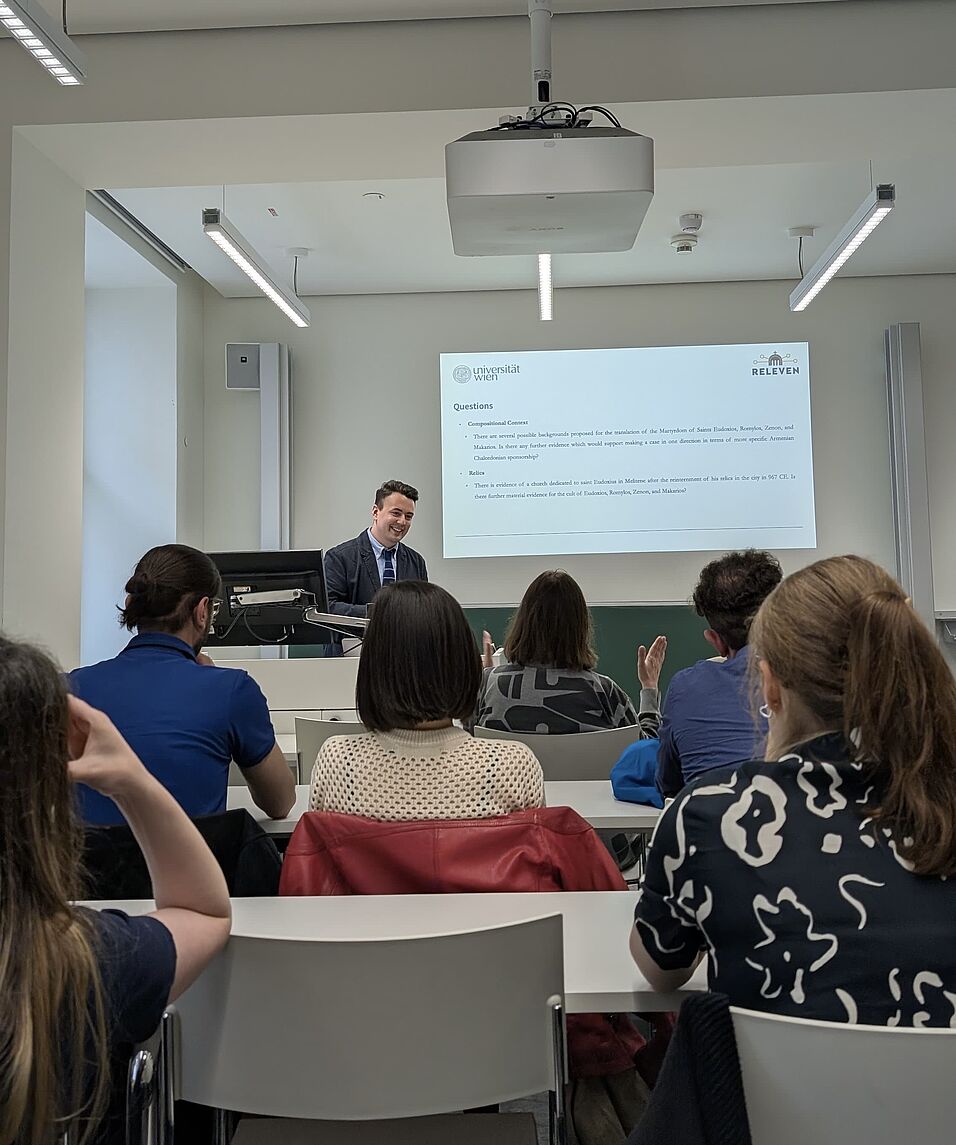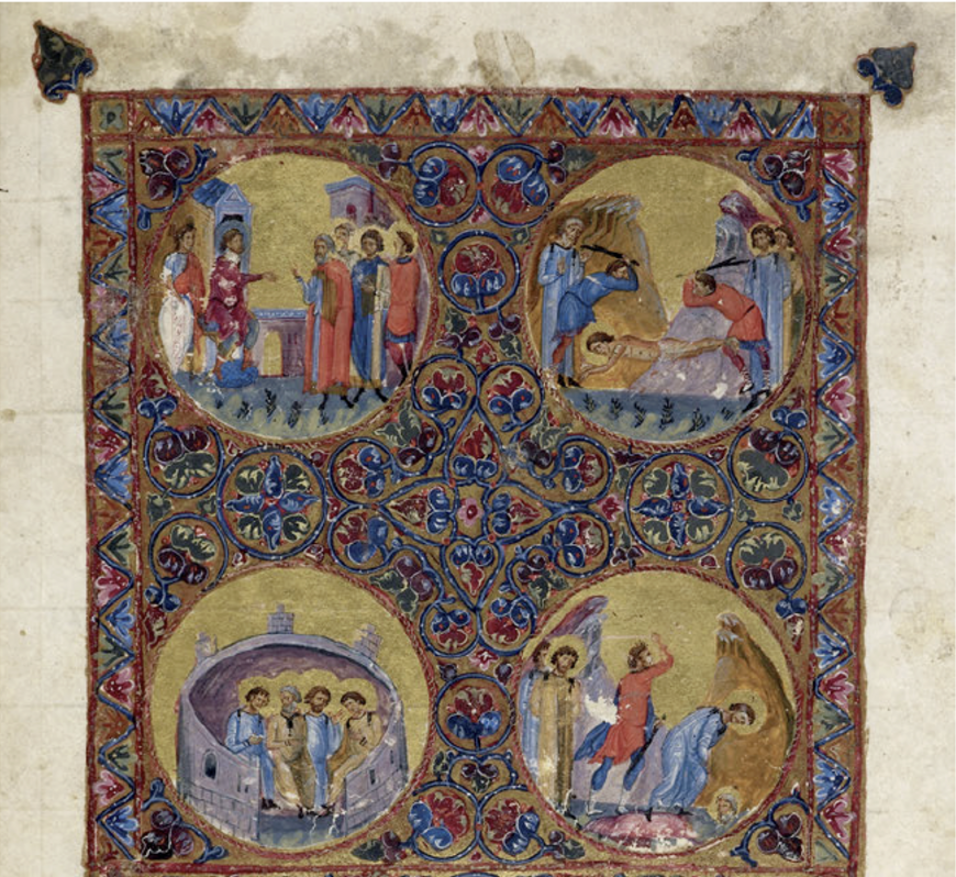Commemorating Saint Eudoxios: Armenian Chalcedonian Translators and the Byzantine Empire in the Eleventh Century
First and foremost my doctoral thesis provides the first critical edition, English translation, and historical study of the Armenian Martyrdom of Saints Eudoxios, Romylos, Zenon, and Makarios, a text translated from Greek into Armenian in the city of Melitene in 1092 by, as my thesis argues, the city’s Armenian Chalcedonian community.
Conceptually and perhaps in broader terms however, my thesis uses the production of this text – this act of translation – as a device to foreground an active milieu of Armenian Chalcedonian translation and veneration activity embedded within and shaped by the socio-cultural and political conditions particular to the expansion of the Byzantine Empire into Anatolia, the Caucasus, Mesopotamia, and Northern Syria during the tenth and eleventh century. Relying on close philological and linguistic examination of the translations which rendered literature from Greek into Armenian during this historical juncture, tracing diverging translation techniques across confessional lines, and drawing comparison to contemporary Syriac and Arabic Chalcedonian Melkite translation activity, my thesis contextualises the production of the Armenian Martyrdom of Saints Eudoxios, Romylos, Zenon, and Makarios within networks of textual dissemination and translation stimulated by the expansion of the Byzantine Empire; a process of push and pull reliant on both imperial infrastructure and on the co-operation and initiative of Chalcedonian populations living throughout the Empire’s eastern frontier who acted as cultural brokers in the construction of a shared confessional environment through the dissemination and translation of a prescribed canon of hagiographical, patristic, exegetical and liturgical texts.
My thesis ultimately highlights that this translation activity not only served to bring previously unattested commemorations, feast days, and liturgical material into local Armenian confessional and literary environments for the first time, as was the case with Saints Eudoxios, Romylos, Zenon, and Makarios, but that it served as a key tool for the intrusion of the Byzantine Empire and the Church of Constantinople into these localities, shaping and conditioning Armeno-Byzantine relations through the construction, reinforcement, and maintenance of a trans-regional confessional space firmly orientated toward the authority and praxis of a Constantinopolitan imperial centre.


